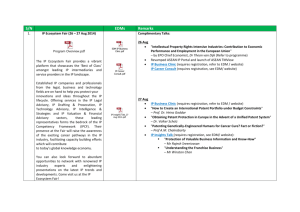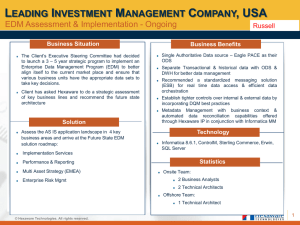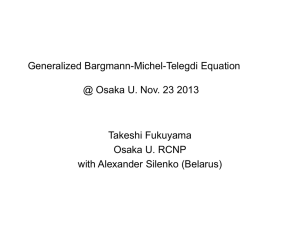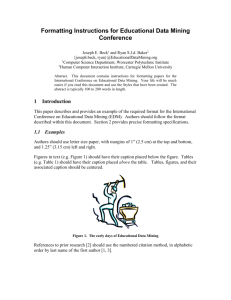Groover/Fundamentals of Modern Manufacturing (4th/5th)
advertisement
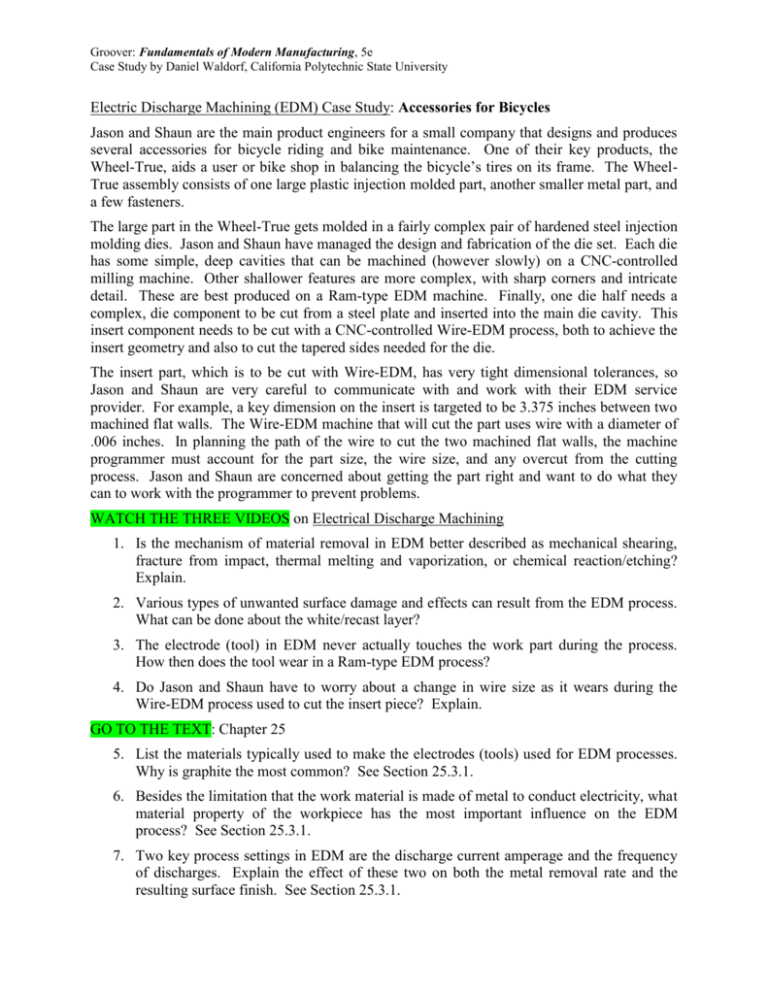
Groover: Fundamentals of Modern Manufacturing, 5e Case Study by Daniel Waldorf, California Polytechnic State University Electric Discharge Machining (EDM) Case Study: Accessories for Bicycles Jason and Shaun are the main product engineers for a small company that designs and produces several accessories for bicycle riding and bike maintenance. One of their key products, the Wheel-True, aids a user or bike shop in balancing the bicycle’s tires on its frame. The WheelTrue assembly consists of one large plastic injection molded part, another smaller metal part, and a few fasteners. The large part in the Wheel-True gets molded in a fairly complex pair of hardened steel injection molding dies. Jason and Shaun have managed the design and fabrication of the die set. Each die has some simple, deep cavities that can be machined (however slowly) on a CNC-controlled milling machine. Other shallower features are more complex, with sharp corners and intricate detail. These are best produced on a Ram-type EDM machine. Finally, one die half needs a complex, die component to be cut from a steel plate and inserted into the main die cavity. This insert component needs to be cut with a CNC-controlled Wire-EDM process, both to achieve the insert geometry and also to cut the tapered sides needed for the die. The insert part, which is to be cut with Wire-EDM, has very tight dimensional tolerances, so Jason and Shaun are very careful to communicate with and work with their EDM service provider. For example, a key dimension on the insert is targeted to be 3.375 inches between two machined flat walls. The Wire-EDM machine that will cut the part uses wire with a diameter of .006 inches. In planning the path of the wire to cut the two machined flat walls, the machine programmer must account for the part size, the wire size, and any overcut from the cutting process. Jason and Shaun are concerned about getting the part right and want to do what they can to work with the programmer to prevent problems. WATCH THE THREE VIDEOS on Electrical Discharge Machining 1. Is the mechanism of material removal in EDM better described as mechanical shearing, fracture from impact, thermal melting and vaporization, or chemical reaction/etching? Explain. 2. Various types of unwanted surface damage and effects can result from the EDM process. What can be done about the white/recast layer? 3. The electrode (tool) in EDM never actually touches the work part during the process. How then does the tool wear in a Ram-type EDM process? 4. Do Jason and Shaun have to worry about a change in wire size as it wears during the Wire-EDM process used to cut the insert piece? Explain. GO TO THE TEXT: Chapter 25 5. List the materials typically used to make the electrodes (tools) used for EDM processes. Why is graphite the most common? See Section 25.3.1. 6. Besides the limitation that the work material is made of metal to conduct electricity, what material property of the workpiece has the most important influence on the EDM process? See Section 25.3.1. 7. Two key process settings in EDM are the discharge current amperage and the frequency of discharges. Explain the effect of these two on both the metal removal rate and the resulting surface finish. See Section 25.3.1. Groover: Fundamentals of Modern Manufacturing, 5e Case Study by Daniel Waldorf, California Polytechnic State University 8. List the purposes of the dielectric fluid in the EDM process. See Section 25.3.1. SOLVE 9. For the Ram EDM process on one of Jason and Shaun’s dies, the EDM service provider gives a quote of $4.50 per minute of EDM time on the part. The operation requires an electrode that has a frontal machining area of 3.82 in2 and must travel to a depth of .75 inches into the steel die blank. Estimate the cost to EDM the die based on the expected material removal rate (RMR)? Consider 80 Amps current. See Section 25.3.1, and use 2750ºF for the melting temperature of the die steel. 10. In the Wire-EDM process being used to cut Jason and Shaun’s insert piece, the overcut is exactly in the middle of the typical range suggested in the text (see Section 25.3.1). How far apart should the programmed path be for the movement of the wire electrode? Assume the programmed path controls the exact middle of the wire.


